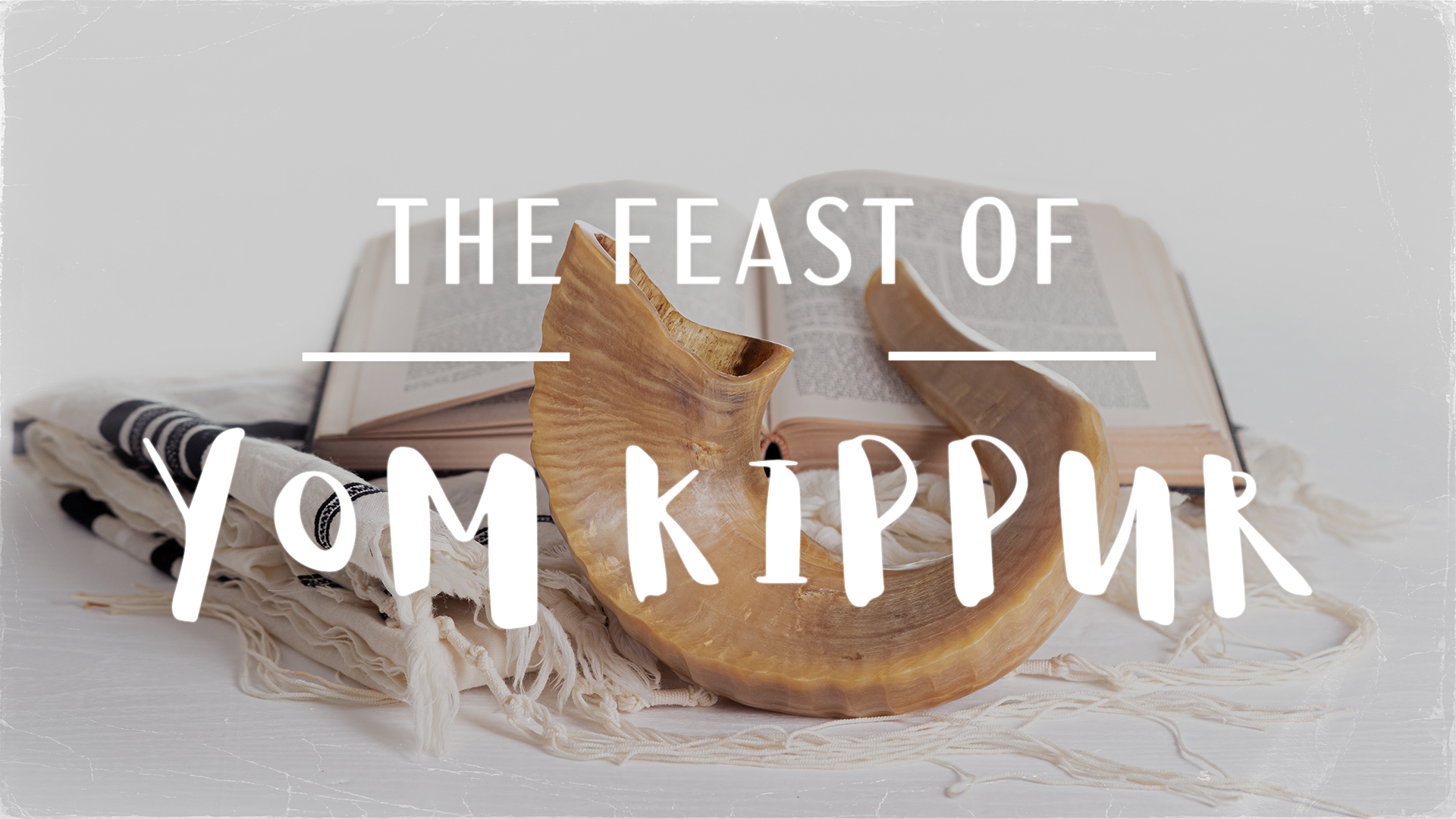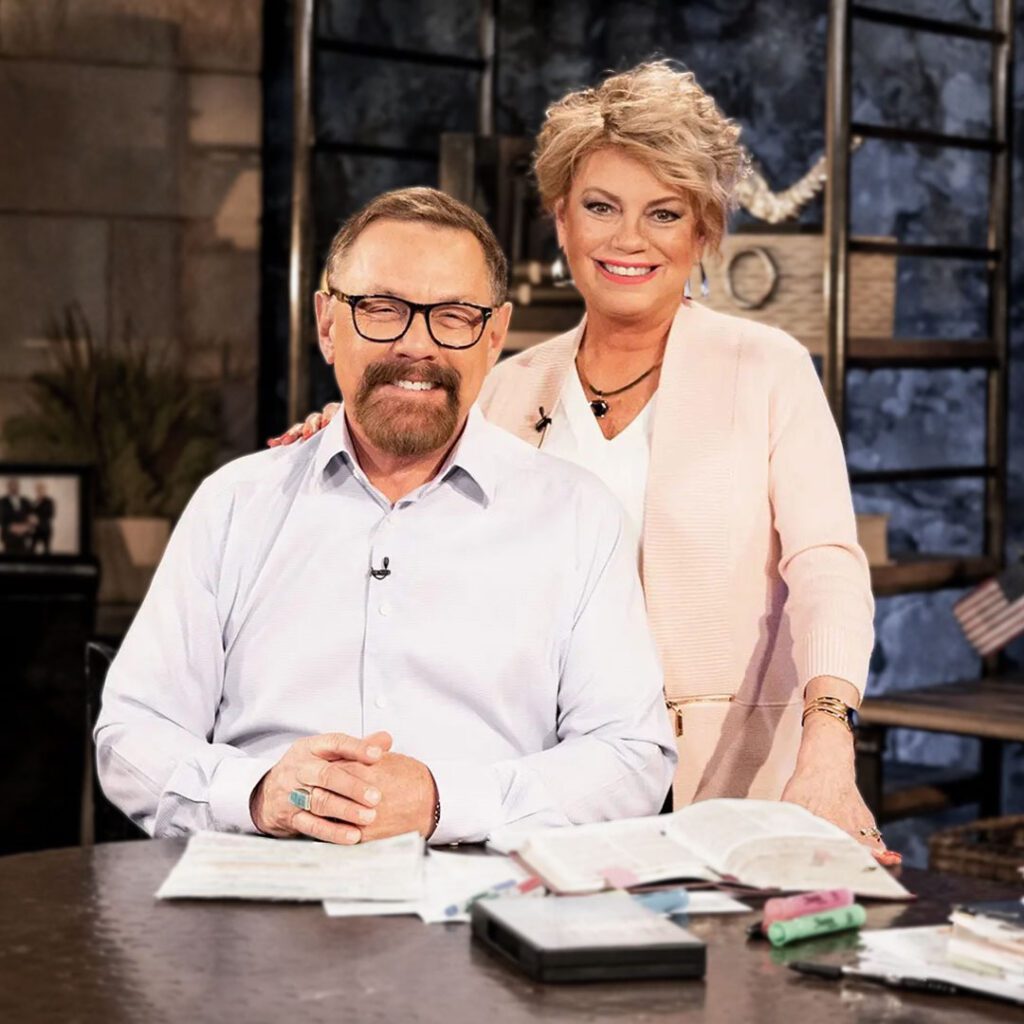The High Holy Days mark a powerful season of blessing and breakthrough. We’ve been sounding the shofar for forty days during the Hebrew month of Elul. During these religious festivals, the shofar is blown in victory and as an alert to all who have “ears to hear” as we prepare for the appointed times. In Jewish synagogues, the people have heard the blowing of the shofar, an ancient trumpet calling for the people of God to wake up as we’ve just come through Rosh Hashanah—the Jewish New Year and the Shabbat of Return. Yom Kippur is upon us now as we look to Sukkot—The Feast Of Tabernacles.
The Holiest Day of The Entire Year
Each fall, Jews around the world recognize Yom Kippur, or the Day of Atonement, on the tenth day after Rosh Hashanah. On this night, sundown begins the twenty-four hours of the Feast of Yom Kippur—an appointed time at which God has decided to meet with us in a way that is different from any other time of the year. During this meeting, God writes your name in the Book of Blessing for the next year so that the windows of heaven can be opened over your life, your family, your finances, and your future—windows that cannot be closed for the entire year.
We find the basis for Yom Kippur in the sixteenth chapter of the book of Leviticus.
Aaron shall offer the bull as a sin offering, which is for himself, and make atonement for himself and for his house. He shall take the two goats and present them before the Lord at the door of the tabernacle of meeting. Then Aaron shall cast lots for the two goats: one lot for the Lord and the other lot for the scapegoat. And Aaron shall bring the goat on which the Lord’s lot fell, and offer it as a sin offering. But the goat on which the lot fell to be the scapegoat shall be presented alive before the Lord, to make atonement upon it, and to let it go as the scapegoat into the wilderness. –Leviticus 16:6–10.
This is Yom Kippur
Then he shall kill the goat of the sin offering, which is for the people, bring its blood inside the veil, do with that blood as he did with the blood of the bull, and sprinkle it on the mercy seat and before the mercy seat. So he shall make atonement for the Holy Place, because of the uncleanness of the children of Israel, and because of their transgressions, for all their sins; and so he shall do for the tabernacle of meeting which remains among them in the midst of their uncleanness. There shall be no man in the tabernacle of meeting when he goes in to make atonement in the Holy Place, until he comes out, that he may make atonement for himself, for his household, and for all the assembly of Israel. And he shall go out to the altar that is before the Lord, and make atonement for it, and shall take some of the blood of the bull and some of the blood of the goat, and put it on the horns of the altar all around. Then he shall sprinkle some of the blood on it with his finger seven times, cleanse it, and consecrate it from the uncleanness of the children of Israel. And when he has made an end of atoning for the Holy Place, the tabernacle of meeting, and the altar, he shall bring the live goat. –Leviticus 16:15-20
Remember, there are two offerings.
Aaron shall lay both his hands on the head of the live goat, confess over it all the iniquities of the children of Israel, and all their transgressions, concerning all their sins. –Leviticus 16:21
Aaron confessed their sins, but he also confessed the curses, or iniquities, that were a result of those sins. If someone had stolen something, that was a sin, but the curse on that person’s finances, businesses, crops, and herds as a result of the sin was just as bad. That was the iniquity. God was not just forgiving the sin; He was also breaking the curse. The God we serve is our Father, and it is His good pleasure to rid us of all of our religious “stinkin’ thinkin’.”
He is God— Our Father
The God we serve is not watching us and waiting for us to make a mistake so He can judge us. He is not eagerly anticipating our failures. On the contrary, He is a God who desires to provide blessings.
Having grandchildren is such a blessing. How many of you know when grandchildren call on their grandparents, everything stops and they want to give them their attention and long to fulfill their desires? If we, a flawed and sinful people, can love them so much, how much more do you think a perfect God is able to love us?
When we pray, when we come before God today and say, “Abba Father, I have a need,” He stops making universes; He stops listening to the heavenly host; He stops everything and says, “Quiet! My babies are here!” Yes, He is God. Yes, He is omnipotent. Yes, He is omnipresent. More importantly, He is your Dad. When Jesus faced His final crisis in the garden of Gethsemane, He prayed, “Abba, Father, all things are possible for You” (Mark 14:36). Jesus was calling on His Daddy.
Atonement- At “One-Ment”
Animal sacrifices were abandoned by the Jews after the destruction of their temple, around A.D. 70. While they existed, however, these sacrifices were the primary way in which the Jews worshipped and honored God. First, according to Jewish tradition, we need to realize that two sacrifices were required by God for Israel’s atonement—or forgiveness. This was also part of Israel’s calendar new year; thus, it was the time when God would erase all the sins of the past year.
The priest was in the temple, where he was preparing. He would put on fine, white linen—the only time of the year he wore it. As he was preparing, his helpers came to the door of the temple, bringing with them not one sacrifice but two—according to Scripture, two goats. (See Leviticus 16:7.) He then cast lots to determine which goat would become the sacrifice. This sacrificial animal was then led into the temple, while the other one was left outside. In the outer courts of the temple, the priests placed the sacrifice onto the brazen altar as the high priest cut its throat. The blood of that goat was to cover the sins of Israel. As this sacrifice took place, the priest’s white robe became saturated with the animal’s blood. In Jewish culture, when something was bloodstained, it became impure and untouchable.
Before the high priest entered the Holy of Holies with the blood of the sacrifice, he removed the soiled robe and hung it in plain view of all the people. Instead of washing only his hands or feet, the other priests completely washed the high priest from head to toe to make sure that there was not one spot of blood remaining on his body. Then, before he appeared before the people again, the high priest put on a new, white robe. His stain-free reappearance was a reminder that no matter what they did, they had come before the Lord, and His mercy was fresh every morning.
From there, the high priest, now washed and clothed in white—a symbol of purity—once again ascended to the altar of God. Because he was now “pure” and about to go into the Holy of Holies to make intercession, no one was allowed to touch him lest he would become defiled. He would chant these words over and over: “Do not touch me with anything of this world, for I have not yet been with the Father.” He entered into the Holy of Holies—the only day of the year this was allowed by God—and sprinkled the blood on the mercy seat of the Ark of the Covenant seven times. This was the “at-one-ment” that released the blessing and forgiveness of God.
Jesus—Our High Priest
Let’s look to the book of Hebrews.
Christ came as High Priest of the good things to come, with the greater and more perfect tabernacle not made with hands, that is, not of this creation. Not with the blood of goats and calves, but with His own blood He entered the Most Holy Place once for all, having obtained eternal redemption. For if the blood of bulls and goats and the ashes of a heifer, sprinkling the unclean, sanctifies for the purifying of the flesh, how much more shall the blood of Christ, who through the eternal Spirit offered Himself without spot to God, cleanse your conscience from dead works to serve the living God? –Hebrews 9:11–14
Jesus, our High Priest, spotted with blood—the representation of sin—was laid in the grave. When He appeared again and walked out of that tomb, He was “white as snow” (Isaiah 1:18). We have been saved from that curse and brought into the resurrected power of our living, loving God, and because of our High Priest who went before us, we are able to stand before God without wrinkle or stain.
Many of you have probably fallen on your knees before God and pleaded, “Lord, forgive me of my sin.” If that was all God did, it would be wonderful, but Jesus did not come only to forgive us of our sins. He also came to shed His blood in seven places on the mercy seat of God and to break the curse of sin and release us from bondage.
“Their sins and their lawless deeds I will remember no more.” Now where there is remission of these, there is no longer an offering for sin. Therefore, brethren, having boldness to enter the Holiest by the blood of Jesus, by a new and living way which He consecrated for us, through the veil, that is, His flesh, and having a High Priest over the house of God, let us draw near with a true heart in full assurance of faith, having our hearts sprinkled from an evil conscience and our bodies washed with pure water. Let us hold fast the confession of our hope without wavering, for He who promised is faithful. And let us consider one another in order to stir up love and good works.—Hebrews 10:17-24
One day a year, however, the high priest was allowed to go before God’s presence and talk to Him for the people. Because of Jesus, our onetime blood sacrifice, you and I can now come boldly into God’s presence and meet with Him, personally.
The Scapegoat
The sacrificial goat dies so we might live. It is blemished with the blood and the curse of our sin. The high priest emerges from the Holy of Holies, and for all of the following year, the people’s sins are covered and God’s blessings are released. He dips his hands back into that blood. He confesses the curses. “Father, there are sicknesses, marriages being destroyed, crops failing, animals dying, and wells drying up in this draught.” That is the curse of sin. The sins are covered, but he doesn’t just have one sacrifice—he has two.
The sacrificial goat is dead, but what about the other goat? This is the “scapegoat.” According to Jewish custom, this is the goat that carries our sins into the desert, never to be remembered. Often, this goat would run off a cliff. If you were to go to Israel, you would see that there is a cliff right beyond the door through which the goat would run. If that goat died, the curses would be broken.
If it survived, it would usually run into the desert. If that goat died in the wilderness, the curses were broken. There is no water in the desert through Jordan to the Red Sea, so the goat would try to get back to the place where it last ate and drank. If the goat managed to come back, the sins of the people remained forgiven, but the curse would remain to block God’s blessings.
Jewish lore states that Aaron would tie a red ribbon around the neck of the scapegoat and then attach a portion of the same ribbon to the door of the temple. Every day, they would wait to hear if the goat was dead. If the Jews had repented, and the goat had died in the wilderness, the ribbon on the temple door would miraculously turn white—a visible sign for the people of God’s forgiveness. In the Mishna—the books of Jewish wisdom—it is said that sometimes it would turn white and sometimes it would not. Sometimes the curse was broken, and sometimes it was not. The Mishna also states that forty years before the destruction of the temple, the ribbon stopped turning white. Since the temple was destroyed, around A.D. 70, the ribbon would have stopped turning white around A.D. 30, or the exact time that Jesus died on the cross, becoming our Passover Lamb and breaking the curse off of everyone forever and ever.
Jesus— Our Perfect Sacrifice
The moment Jesus died on the cross our sins were washed away, once and for all. I don’t care what you did yesterday. I don’t care what you did twenty years ago. The devil may try to bring it back up, but Jesus has already washed us clean, and our sins went down the drain. Not one spot of guilt remains. Our Sacrifice, Jesus, shed His blood and died in plain sight as our permanent atonement for sin. This is the basis for the prophecy that says,
“Come now, and let us reason together,” says the Lord, “though your sins are like scarlet, they shall be as white as snow; though they are red like crimson, they shall be as wool.” –Isaiah 1:18
Christians who confess, repent, and plead the blood of Jesus are then forgiven. Through His blood, we are cleansed, though our sins “are red like crimson, they shall be as wool.” There is no condemnation for those who are in Christ Jesus. (See Romans 8:1.) There is no condemnation if we repent. We have to repent. You can’t be a born-again drug user. You can’t be a born-again fornicator. You have to repent. You have to turn back to God and away from your sinful ways. The moment you do that, His mercy is fresh every morning.
Bringing A Sacrifice Is Not What You Think
Rabbis teach that on Yom Kippur, God is closer to earth. He is setting up His kingdom, where there will be no more tears; there will be no more sorrow. There will be no lack or pain. On this day, He is closer to setting up His kingdom than on any other day of the year. The Lord is our God every day of the week, but on the Sabbath, everything multiplies. On Yom Kippur, everything multiplies again.
During Yom Kippur, first, we repent, then we fast and pray, and the third thing we do is bring a sacrifice. This doesn’t mean what you may think. The word sacrifice is not what we have been taught in Christianity. It means “to bring a gift.” We think that sacrifice means “going without.” It doesn’t. To sacrifice is to bring a gift of honor. We are honoring God for this last year, but we are also honoring God for the year we know He is going to bring us.
If you want God to open up windows of heaven, this is the day to make sure that you get on the path so that God can go into the Holy of Holies for you. Jesus paid the price and opened that door, so you and I are no longer separated from God. We can enter in and go before the God of Abraham, Isaac, and Jacob.
The shofar is sounding to remind us that as Christians we can heed the alert to bring more Jews back to Israel on Aliyah flights, feed and clothe both the elderly and Holocaust survivors, fund ambulances and defibrillators, and so much more.
Incredibly, we have been able to sow over a million dollars this year, particularly into our prophetic Project Aliyah outreach. We know that this is only accomplished through your continued support that we are able to continue blessing the nation of Israel.
Thank you for standing in faith through your ongoing commitment to the miracle of Project Aliyah as we continue to bring more Jewish families and individuals safely home to a new life in the land of their forefathers, Israel.
This Yom Kippur let us completely immerse ourselves in God’s holy presence so that every sin is forgiven, every curse binding is broken, and we are sealed in God’s covenant blessings and promises as we prepare for the crowning event, Sukkot—The Feast of Tabernacles!


